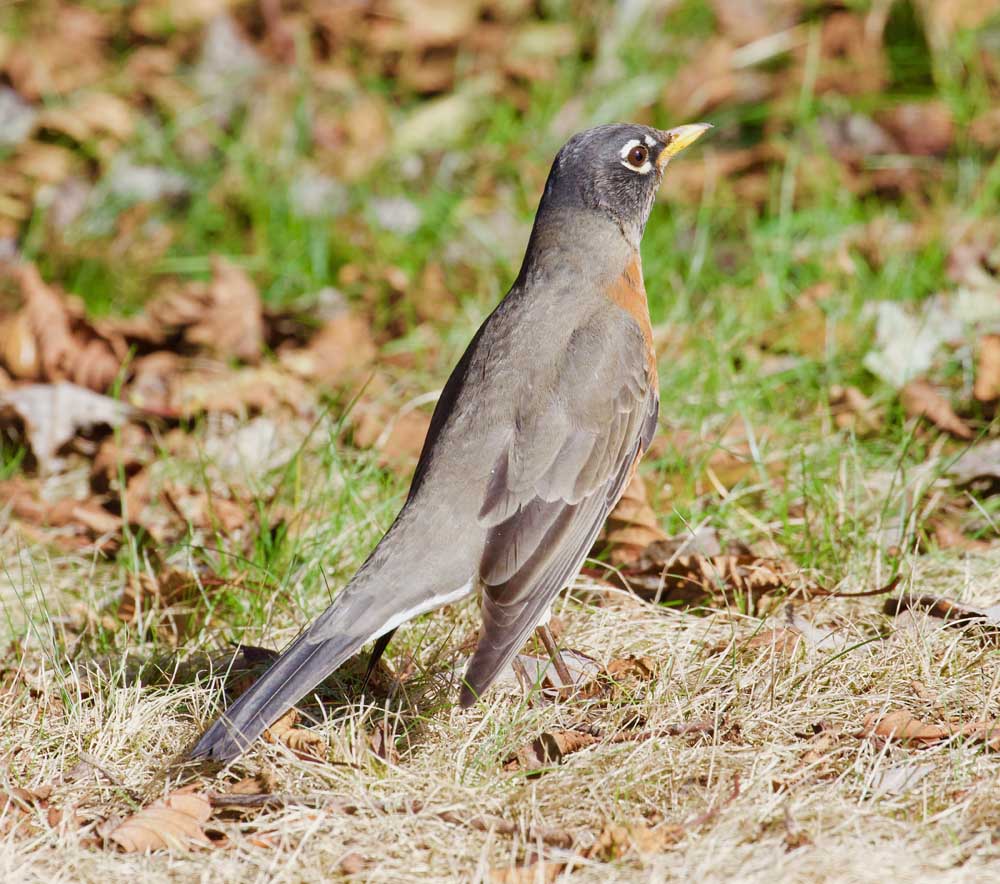Birding: Spring is just around the corner…
Published 9:13 am Friday, March 12, 2021

- An American robin forages on a lawn for worms, insects and other invertebrates.
Spring is just around the corner. Have you seen signs of it yet?
Trending
The American kestrel pair that have been nesting in and around Tarlatt of the Willapa National Wildlife Refuge South Bay Unit have been dating on-line in the past few weeks where they have often been seen sitting on the power lines. It is hoped that the pair will reuse the nesting box located in the field off 95th. Nesting in the box by a pair of kestrels has been confirmed at least once in the past few years. The pair are foraging in the fields off 95th for whatever delicacies they can find. It is hoped that the insect population will flourish in the fields again this year so that the kestrels will once again decide to raise a family in their old homestead!
House sparrows are busy gathering bits of grass and dry vegetation from last year’s plantings. They fly off with their treasures to the nearest nesting hole, which is usually in a building, a sign, a streetlight and even in traffic lights. They will nest in cavities, but it is a rare occurrence. House sparrows are not very tidy nest builders. They stuff the nesting hole with the course material until it is full! However, they do add such things as string, feathers, and other softer material to give their young some comfort. If you find a nesting spot you can usually see nesting material bulging from the entrance to the nest.
We will soon begin to see larger concentrations of ducks and geese and they stop to rest and feed before heading further north to their breeding grounds. Ebird reports suggest that green-winged teal, American wigeon and gadwall and other aquatic plant eaters are beginning to pass through.
Trending
For the past few weeks, the northern flickers have been very entertaining. The males are competing with one another for territory and for the attention of their female counterparts. I was enthralled by such activity this week at a local bird sanctuary. Two male northern flickers were duking it out in a tree going around and around the tree trunk with tails and wings flaring and heads stretched up high, screeching all the while.
Meanwhile two female northern flickers were sitting in the same tree on two sturdy branches fairly close to each other. They appeared to be oblivious to the show but at the same time it seemed as though they were keeping an eye on the entertaining antics of their potential mate. After about 10 minutes of this, all four flew off together to another area of the woodlot where they continued to carry on. Their calls reverberated throughout the sanctuary for a very long time. I have no doubt that this behavior is happening right now on the Peninsula and elsewhere.
Other signs of spring include the return of our waterfowl. We will soon begin to see larger concentrations of ducks and geese and they stop to rest and feed before heading further north to their breeding grounds. Ebird reports suggest that green-winged teal, American wigeon and gadwall and other aquatic plant eaters are beginning to pass through.
Another sign that spring is just around the corner is the return of the American robin. If you saw robins in December or January, you most likely saw a bird that overwintered. If robins stay on their breeding grounds during the winter, the most likely place to find them is in treetops or in fruit trees. They are seldom seen on lawns of homes or parks in winter. Their major food source in the fall and winter is fruit. Robins are beginning to arrive on the Peninsula. Once here, we will see them stalking worms, insects and other invertebrates on lawns everywhere.
The evidence is in! Spring is just around the corner. New life and more joy accompany spring. I, for one, am happy that it is just around the corner. Happy Birding!









